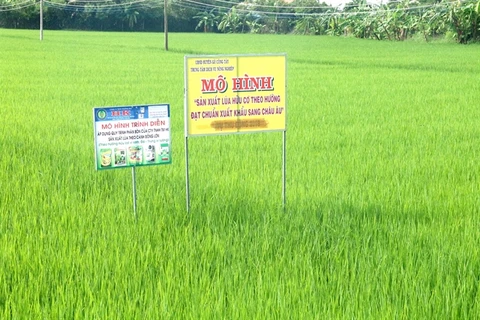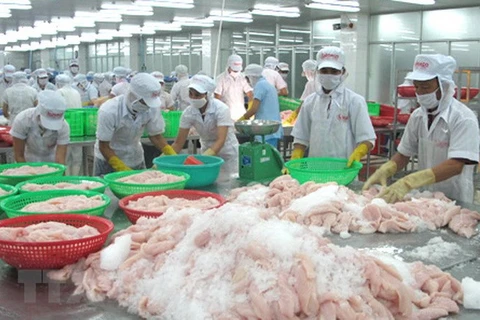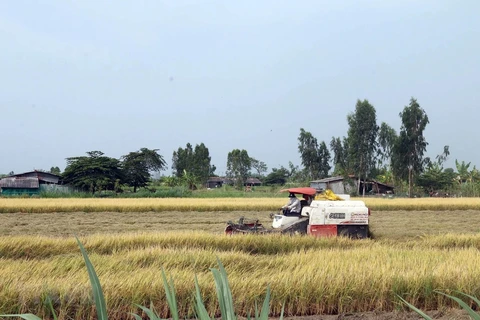Tien Giang (VNS/VNA) – Farmers in the Mekong Delta province of Tien Giang are raising the fry of high - value aquatic species on an area of more than 6,000ha this year, up marginally from last year, according to the province’s Department of Agriculture and Rural Development.
The species include black tiger shrimp, white – legged shrimp, giant river prawn, tra fish, and clam.
The farmers have harvested nearly 11,000 tonnes so far this year for both domestic consumption and processing for exports, also marginally higher than in the same period last year.
With a coastline of 32km and a dense river and canal network, the province has a huge advantage in terms of breeding all kinds of aquatic species, whether saltwater, brackish or freshwater.
It has developed a number of farming models and bred various aquatic species suitable for each area.
In coastal areas in the downstream region of the Tien River, a tributary of the Mekong, black tiger shrimp and white-legged shrimp are bred.
Tra is bred in islets further upstream on the Tien River.
The province has established areas for farming fish in floating cages along the Tien River.
Last year it suffered severe saltwater intrusion in the dry season, but aquaculture was not affected much and most farmers enjoyed high and steady incomes.
The price of tra fish increased to 22,000 - 24,000 VND (0.9 – 1 USD) per kilogramme in the last few months of last year, up 3,000 - 4,000 VND from earlier months.
Farmers are breeding tra fish on around 100ha to supply processors for export.
Hundreds of farmers along coastal areas in the Cua Tieu and Cua Dai estuaries are breeding shrimp using advanced two-stage and three -stage industrial farming models.
The two-stage model requires various ponds for breeding shrimp and treating water. Juvenile shrimp are first bred in the nursery pond for a few weeks before being transferred to the main pond for intensive breeding.
The shrimp breeding ponds are equipped with oxygenation facilities, anti-sunlight nets and plastic sheets on the bed.
Both models offer a high yield of 40 - 50 tonnes per hectare per crop./.
























